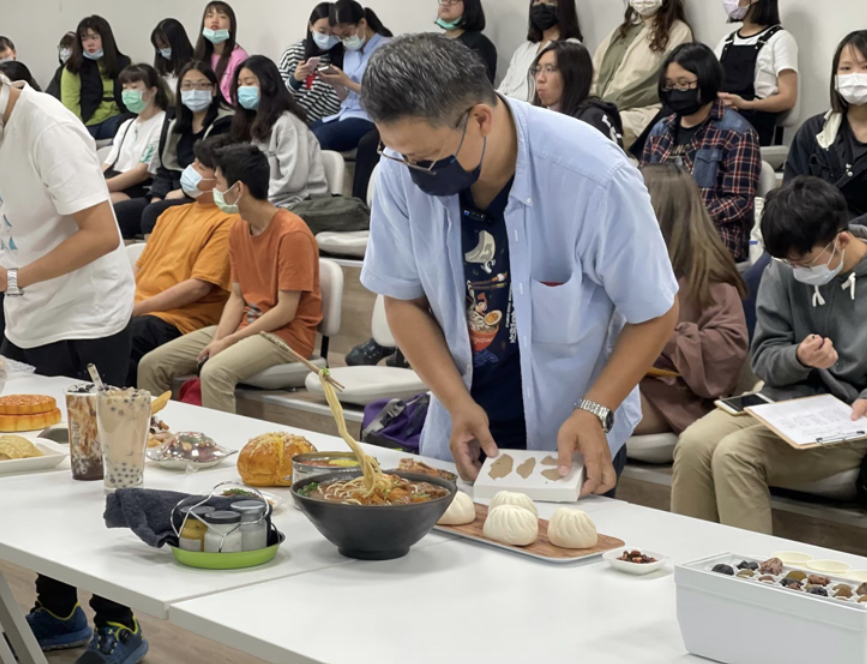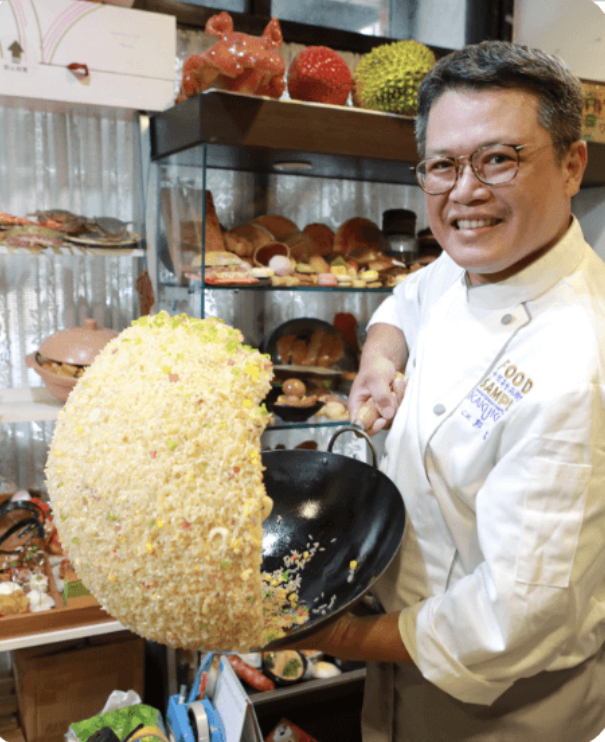![]()
食品模型師郭志忠-日本傳統工藝藝術家

“全台第一日籍師傅傳承人,台灣首位食品模型師傅”
圖片來源:卡固高官網
1917年,食品模型的概念出現在日本,過去有種說法,日本人是用眼睛吃食物,所以對於食物的味覺、嗅覺、新鮮度、甚至喜好都是透過第一眼來做判斷,即使食物尚未入口,而食物外觀看著新鮮且外在擺盤搭配講究,便會覺著好吃,差不多就會選擇進入那家餐廳了。為了達到這樣的效果,仿真食品模型櫃作為餐廳經營的代言人因應而生。隨著這些概念的衍伸直至1932,岩崎瀧三先生製作了第一個蛋包飯食品模型誕生,也因此開啟了食品模型產業的發展。

從事食品模型的郭志忠老師入行已超過二十多年,原本就有商業設計科班出身底子的他,在一次因緣際會下參觀了食品展,當時剛退伍的郭老師,看著眼前這些製作精美,並且能挑起滿滿食慾的食物模型便產生了極大的興趣,於是向當初參加食品展的日商公司毛遂自薦。 就是這樣的誠意與熱情打動了正準備在台灣拓展業務計畫的日商公司,並於1997年與日籍山根師傅身上學習了製作食品模型,儘管與山根師父間有語言及文化的隔閡,郭志忠卻能憑藉自己對於美學上的堅持加上師傅的訓練,成為臺灣第一位繼承此技術,亦是從事食品模型製作的第一位師傅。 2008年郭志忠回到家鄉-高雄,創立了卡固高食品模型公司,推展臺灣食品模型運用也傳授指導食品模型技術學習。
看得見的美味
過去的自己勇於追求機會、發現自己的興趣,也讓郭志忠每每在演講當中,鼓勵年輕學子常常看展覽,或許能在這當中也發覺到自己的喜好,並且從中找到屬於自己的機會,只要有興趣就要勇敢去爭取。對於自己做過的食品模型,郭志忠不斷嘗試新的挑戰,並且隨時尋找、刺激自己能有新的靈感再下一個創作上,食品模型設計師除了要有基礎的美學概念,還必須對吃有很高的敏銳度。郭志忠說:「讓人感覺好像能聞到香氣味道,就是成功的模型。」
瞭解更多點擊:生活品味

